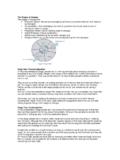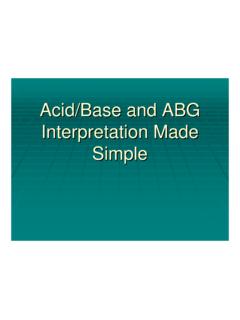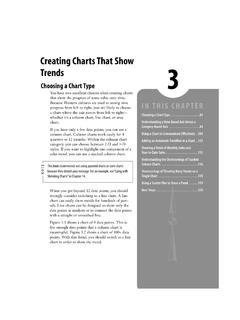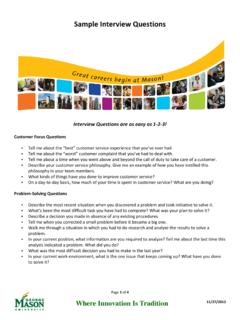Transcription of Technological Changes and Transportation Development
1 UNESCO EOLSSSAMPLE CHAPTERSTRANSPORTATION ENGINEERING AND PLANNING Vol. I - Technological Changes and Transportation Development - William L. Garrison Encyclopedia of Life Support Systems (EOLSS) Technological Changes AND Transportation Development William L. Garrison University of California, Berkeley, USA Keywords: technology, innovation, qualitative change , supplier systems, service provider systems, modes, user systems, interactivity, specialization, communications Contents 1. Introduction Developments Plan for this Discussion 2. Transportation Technology and Innovation Technology Development Process Discussion of the Process Temporal and Spatial Realizations Winners and Losers 3.
2 Structure, Behavior, and Performance Supplier, Service Provider, and User Technologies Innovator Roles Combining Technologies Linking Perceptions and Roles 4. Service Providers as Innovators Innovations Combine Inputs Networks as Venues for Service Provision Innovations 5. Innovations within User Systems Increased Demand Pulls Technological change Further Consideration of User Innovations 6. Inputs to Service Providers Improved Inputs Improve Services Process Technology Improvements Market-Driven Improvements Economic Development -Driven Improvements 7. Transportation and Communication Synergies Bibliography Biographical Sketch Summary This discussion emphasizes the ways Transportation innovations and Technological improvements increase options available to users.
3 As the variety of services increases, users improve the ways old things are done and engage in new activities. Thus Transportation innovations and technology Development enable social and economic progress. The challenge is to improve the future by increasing options available to users. This broad challenge is in response to sustainability issues posed as social, economic, and UNESCO EOLSSSAMPLE CHAPTERSTRANSPORTATION ENGINEERING AND PLANNING Vol. I - Technological Changes and Transportation Development - William L. Garrison Encyclopedia of Life Support Systems (EOLSS) physical environments change and affect life support systems. The task is easy to state. But a look back and around reveals disjoint institutions and actors.
4 Actors include (1) suppliers to service providers (such as shipbuilders, highway and bridge agencies, construction companies, and fuel producing companies), (2) service providers (such as railroads, liner operators, and individual auto drivers), and (3) service users (such as manufacturers, farmers, and others) who incorporate Transportation into their recipes for work, recreation, and other things. Depending their place in the Transportation system, actors hold differing and limiting views of innovation processes and their outcomes. Consequently, potentials for dysfunction abounds. Prior to discussing innovations, I present a general model of technology Development . The constraints on technology Development imposed by the incremental and historic path-dependence behaviors of systems are identified.
5 1. Introduction Technological improvements over the centuries have yielded cheaper, faster, and better (less polluting, quieter, safer, more reliable) Transportation services. Stories about this glorious history are usually in the language of vehicles, facilities, and propulsion. Wheeled wagons were in use at least 5000 years ago, and about 2000 years ago, swiveling front axles to aid steering were developed. Roman roads helped tie the Roman Empire together, as roads did for early empires in China and the Americas. Carts or sledges served where relatively good roads were not available. For millenia, most folks walked along trails, and horses, camels, and mules carried trading goods.
6 Around 1800, steam was harnessed for propulsion and superseded sails and animals. Steam has been followed by gasoline, diesel, and turbine engines. Fuel cells are in Development as of the turn of the twenty-first century. Recalling these Changes , it is fair to conclude that technology has improved rapidly in recent centuries. As late as 1800, the very best road wagon and ocean sailing services made it possible for mail, travelers, and goods to travle 150 km in 24 hours. At the turn of the twenty-first century, most of the world has far better services. Although some places are better served than others, and affordability and service quality are often at question, improved services are pretty much universally available.
7 It is too bad that the emphasis is on vehicles, facilities, and propulsion, for there is much more to Transportation technology enhancement. The improvement of services matters, and stress should be on the processes that have induced and steered Technological advances, increased the variety of services, and enabled Transportation to serve ever more varied purposes. Networks have adapted to varied environments and demands and have often enabled activities to shift to places and environments for which they are best suited. In tandem with communication between people, activities, and places, improved Transportation technology has increased trade in goods, ideas, and understandings, as well as daily, seasonal, and longer term movement of workers, students, and tourists.
8 In these ways, interactivity capabilities enabled the growth of the middle classes and helped change the balance of economic and political power. UNESCO EOLSSSAMPLE CHAPTERSTRANSPORTATION ENGINEERING AND PLANNING Vol. I - Technological Changes and Transportation Development - William L. Garrison Encyclopedia of Life Support Systems (EOLSS) Transportation Developments Technological advances have played a role in hundreds of years of successes (and failures). Looking back, waves of Transportation Development pushed older modes aside and supported sweeping social and economic Changes . In each era, a set of technologies, services, or modes occupies the turf, so to speak. In the more developed nations of the late twentieth century, there are well established rail, air, short sea, ferry, auto, and other services.
9 Perceptions, institutions, and activities tied to these services are also well established and entrenched. As less developed economies mature, services are expanded either in response to market pull or as a result of investments intended to induce Development . But although this enhances modes in many ways, their technologies and services are rooted in the conditions that existed at the time they emerged and therefore they may have attributes incompatible with the developed economy. There are always concerns about sustainability and the consequences of continued growth along the existing path. These concerns focus on Transportation 's impacts on the use and management of resources.
10 A second question, mostly out-of-mind, addresses the Development and implementation of Transportation innovations and improvements that help society to create and choose equitable and life improving Development paths. The challenge of Transportation technology is to find efficient and sustainable Development paths that also open options. Increasing efficiency by itself will not create the new environments that enable innovation. These environments may be as necessary in the future as they have been in the past to support the evolution of a more workable and equitable future for all sectors of society. Plan for this Discussion In the following discussion I recognize the linkages that tie Transportation infrastructure and services to most aspects of modern life, as well as the roles Transportation plays in advancing Development .



















